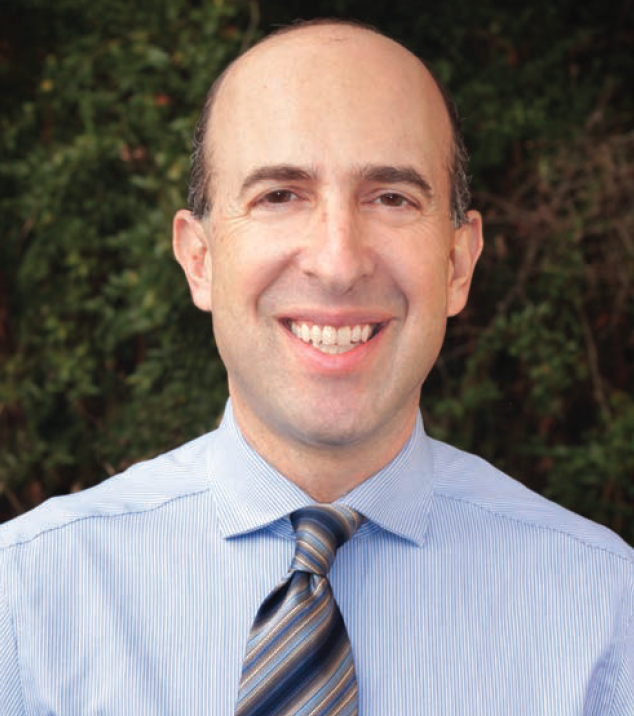 Dr Ron J. Feldman is director of the Autoimmune Blistering Disease (AIBD) Clinic at Emory University in Atlanta, GA, where he oversees a large population of patients from the southeastern United States who have these rare and devastating diseases. He initially received his medical degree from the Medical University of South Carolina in Charleston and completed a combined internship and dermatology research residency at Cleveland Clinic (OH), where he developed an interest in AIBD. He then pursued subspecialty fellowship training in Boston, MA, at the Center for Blistering Diseases and later transitioned to faculty at Emory Dermatology, where he is currently assistant professor of dermatology overseeing patients at both Emory and the VA Medical Center (Decatur, GA).
Dr Ron J. Feldman is director of the Autoimmune Blistering Disease (AIBD) Clinic at Emory University in Atlanta, GA, where he oversees a large population of patients from the southeastern United States who have these rare and devastating diseases. He initially received his medical degree from the Medical University of South Carolina in Charleston and completed a combined internship and dermatology research residency at Cleveland Clinic (OH), where he developed an interest in AIBD. He then pursued subspecialty fellowship training in Boston, MA, at the Center for Blistering Diseases and later transitioned to faculty at Emory Dermatology, where he is currently assistant professor of dermatology overseeing patients at both Emory and the VA Medical Center (Decatur, GA).
Dr Feldman conducts an active translational research program, which includes ongoing clinical trials and collaborative efforts for biomarker analyses for advancement of targeted therapies. More recently he has studied the effects of these rare autoimmune diseases on patient quality of life particularly related to pruritus.
Q. What part of your work gives you the most pleasure?
A. I always feel like I learn something new from patients, especially those with AIBD, for they present in such varied ways. Just when you think you have figured out the secret of success, another patient with an unexpected presentation appears or a patient experiences a treatment failure. In many cases I have the scenario of patients already presenting to multiple other subspecialists who tended to focus on their specific organ system. It is then just a matter of having to put all of the pieces together with a few triggers from their clinical history to realize the puzzle has formed and the diagnosis becomes apparent. Seeing patients breathe a sigh of relief that someone has finally listened to them and can offer them at least a sense of hope truly provides me pleasure.
Q. Who was your mentor and why?
A. One of my earliest mentors as a resident was Dr David Hamrock at Cleveland Clinic. He had a busy clinic full of patients with AIBD. This was my first introduction to these rare diseases, and I learned a tremendous amount from him on how to effectively manage these patients, including multiple pearls on how to utilize various therapeutics. I frequently sought his advice on multiple occasions late after clinic and his door was always open. He is an incredibly astute clinician and has a unique way of connecting with patients. Not only was he a valuable mentor, but he remains a good friend.
Q. Which patient had the most effect on your work and why?
A. One of the most memorable patients for me was surprisingly not a blistering patient but a woman that I had the pleasure of taking care of as a resident. She had developed severe vasculitis in the setting of hepatitis C. I became close with the patient and her daughter through many trials and tribulations and unfortunately a series of failed treatments, which eventually resulted in her passing from complications related to the vasculitis. I attended the funeral and learned even more about her social support network and her life outside of this disease with which she so suffered. This patient experience was an important reminder to me that we are treating a complex human being and not just a skin disease. In addition, as physicians, we are involved in the cycle of life and death of our patients, which is an incredible responsibility and humbling experience.
Q. What is the best piece of advice you have received and from whom?
A. Actually my grandfather who was a general surgeon always reminded me to listen carefully to your patients for they will many times provide you with the diagnosis just based on a thorough history. This advice is so applicable for dermatology; in many instances, just based on the history and subsequent skin exam, we are able to arrive at a diagnosis relatively quickly without the necessity of more sophisticated studies.
Q. Which medical figure in history would you want to have a drink with and why?
A. While not necessarily a traditional medical figure, I would love to have had time to sit down with George Washington Carver. Best known for his work related to peanuts, Dr Carver was a brilliant scientist who overcame significant odds to rise in the academic ranks in the early 20th century. He sacrificed greatly to return to the southeast to help teach and provide knowledge to the students and surrounding farmers to help them survive in the changing economies of the south at that time. His findings are still relevant today, highlighting a true significance of the expertise and scientific accomplishments
of a historical figure from whom we can all learn something.





















